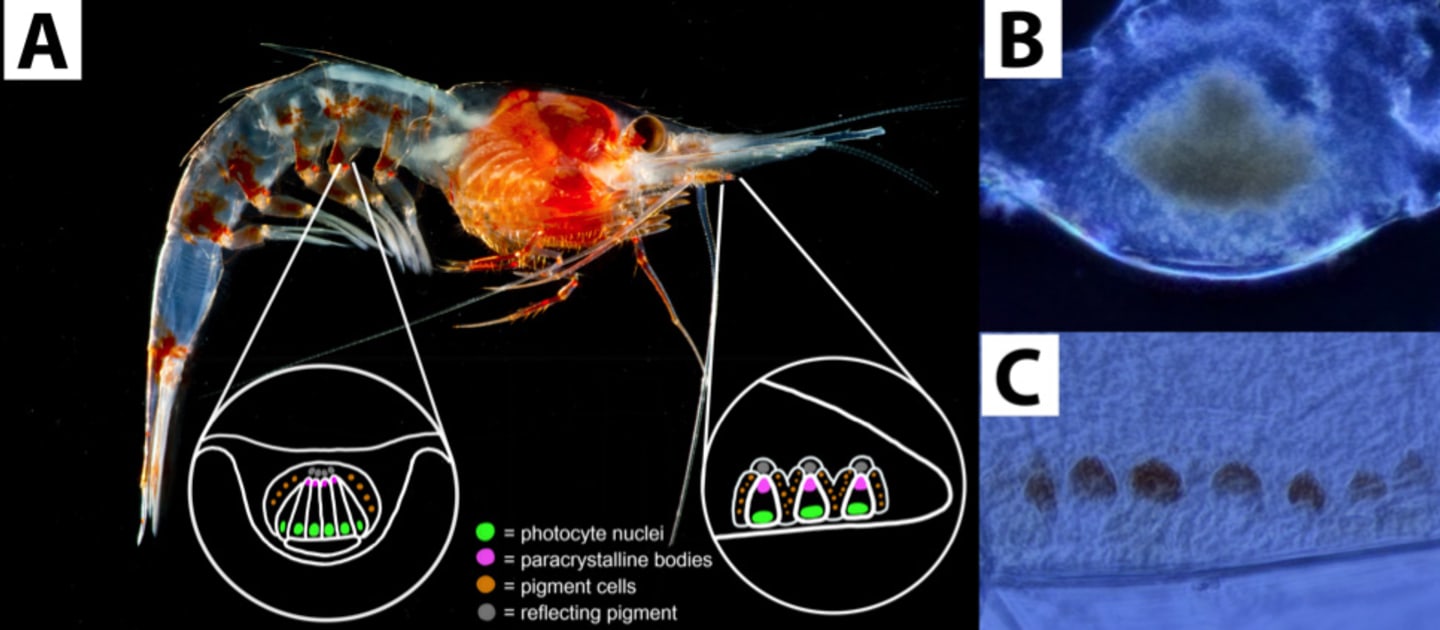- Title: Bioluminescence and Light Detection in the Deep Sea
- Principal Investigator: Heather Bracken-Grissom
- Funding Amount: $416,520.00
- Funding Source: National Science Foundation
- Timeline: 03/01/16–02/28/21
Bioluminescence, which is rare on land, is extremely common in the deep sea, being found in 80% of the animals living between 200 and 1000 meters depth. These animals rely on bioluminescence for communication, feeding, and/or defense; so, the generation and detection of light is essential to their survival.

Our present knowledge of this phenomenon has been limited due to the difficulty in collecting live deep-sea animals, and the lack of proper techniques needed to study this complex system. However, new genomic techniques are now available, and a team with extensive experience in deep-sea biology, vision, and genomics has been assembled to lead this project.
This project will study three questions:
- What are the evolutionary patterns of different types of bioluminescence in deep-sea shrimp?
- How are deep-sea organisms' eyes adapted to detect bioluminescence?
- Can bioluminescent organs (called photophores) detect light in addition to emitting light?
Findings from this study will provide valuable insight into a complex system vital to communication, defense, camouflage, and species recognition. This study will bring contributions to the fields of deep sea and evolutionary biology, and immediately improve our understanding of bioluminescence and light detection in the marine environment. In addition to scientific advancement, this project will reach kindergarten through college aged students through the development and dissemination of educational tools, a series of molecular and organismal-based workshops, museum exhibits, public seminars, and biodiversity initiatives.
This project combines phylogenomic, physiological, and molecular studies to test several hypotheses addressing the evolution of bioluminescence and light detection in a remarkable family of deep-sea shrimp. All shrimp within the family Oplophoridae use a luminescent secretion discharged from the mouth to deter predators, while only some possess a second mechanism of bioluminescence in the form of photophores. Photophores are light-emitting organs found across the body that are thought to function in counterillumination and mate attraction. These different types of bioluminescence emit light at slightly different wavelengths and spectral bandwidths. Past studies have shown shrimp with both the secretion and photophores possess unique visual systems to distinguish between these different bioluminescence types. However, an in-depth characterization, which combines genomic, molecular, and physiological methods, has never been applied to investigate this system. In addition, how animals with photophores can so precisely match the downwelling irradiance has remained a long-standing mystery. New preliminary evidence suggests that the photophores contain photopigment proteins (opsins) and other phototransduction genes that allow for light detection. This is the first indication that autogenic light organs may also have light detection capabilities. This raises the exciting possibility that some shrimp can "see" from structures other than their eyes and might provide a mechanism for their unique counterillumination abilities.
The first objective is to use phylogenomic methods to build a robust phylogeny to trace the evolutionary origins of the two bioluminescence modes (secretion and photophore) within oplophorid shrimp. Secondly, this project will characterize the visual systems of deep-sea shrimp to better understand how shrimp distinguish between different wavelengths of emitted bioluminescence. Lastly, integrative methods will be used to examine photosensitivity in several non-bacterial (autogenic) light organs - the photophore and organs of Pesta (light organ of Sergestidae).
Read more about deep-sea shrimp's light-detecting organs, the visual systems and migratory behavior of deep-sea creatures, or how shrimp's glow may not lead to love.
Team
Principal Investigator
Heather Bracken-Grissom
Professor; Assistant Director, Institute of Environment
305-919-4190; Lab 305-919-5838
hbracken@fiu.edu
MSB 361
Participating Faculty
Danielle DeLeo
Postdoctoral Associate
305-348-2201
ddeleo@fiu.edu
OE 167, MSB 330

